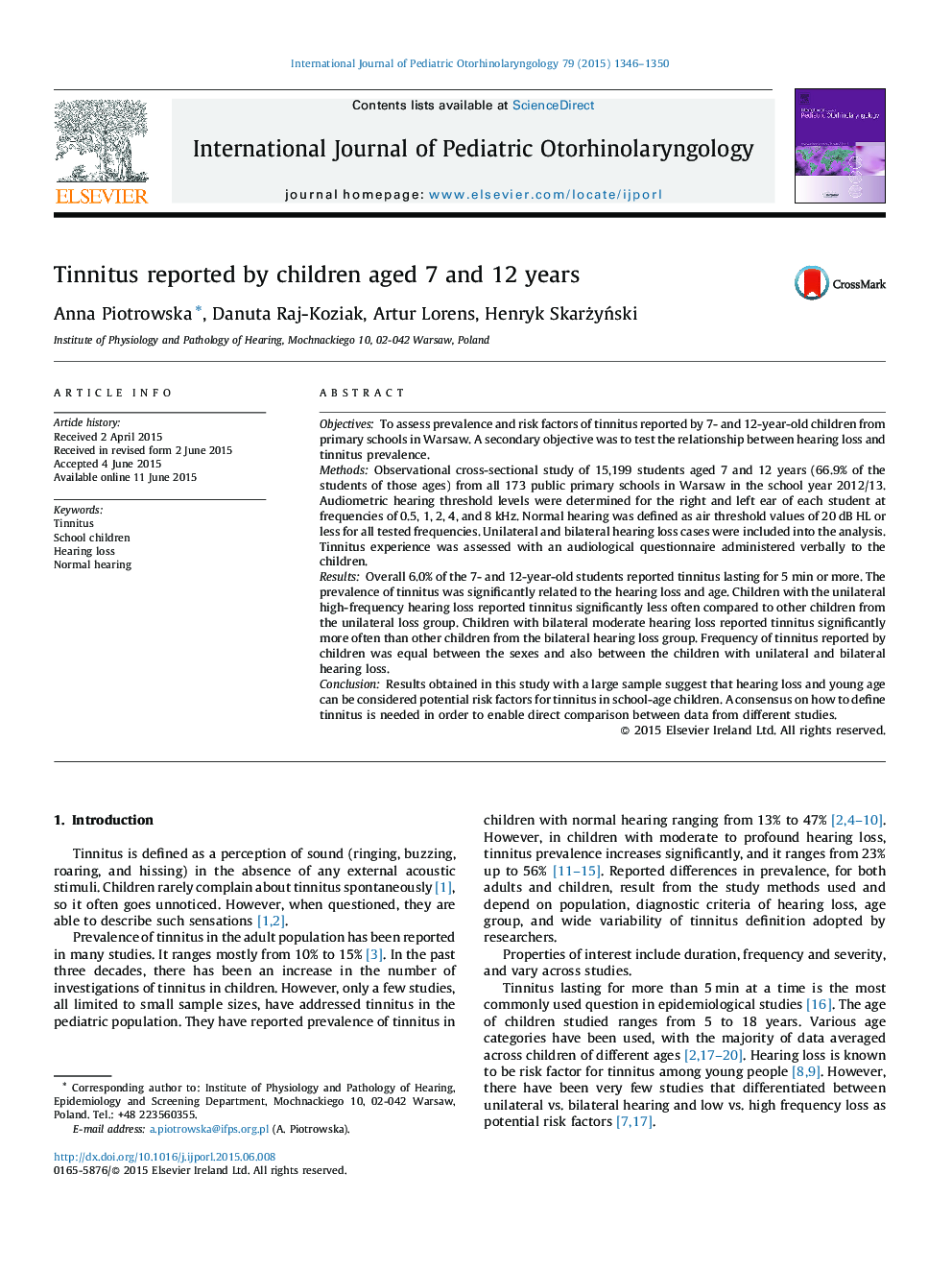| Article ID | Journal | Published Year | Pages | File Type |
|---|---|---|---|---|
| 4111678 | International Journal of Pediatric Otorhinolaryngology | 2015 | 5 Pages |
ObjectivesTo assess prevalence and risk factors of tinnitus reported by 7- and 12-year-old children from primary schools in Warsaw. A secondary objective was to test the relationship between hearing loss and tinnitus prevalence.MethodsObservational cross-sectional study of 15,199 students aged 7 and 12 years (66.9% of the students of those ages) from all 173 public primary schools in Warsaw in the school year 2012/13. Audiometric hearing threshold levels were determined for the right and left ear of each student at frequencies of 0.5, 1, 2, 4, and 8 kHz. Normal hearing was defined as air threshold values of 20 dB HL or less for all tested frequencies. Unilateral and bilateral hearing loss cases were included into the analysis. Tinnitus experience was assessed with an audiological questionnaire administered verbally to the children.ResultsOverall 6.0% of the 7- and 12-year-old students reported tinnitus lasting for 5 min or more. The prevalence of tinnitus was significantly related to the hearing loss and age. Children with the unilateral high-frequency hearing loss reported tinnitus significantly less often compared to other children from the unilateral loss group. Children with bilateral moderate hearing loss reported tinnitus significantly more often than other children from the bilateral hearing loss group. Frequency of tinnitus reported by children was equal between the sexes and also between the children with unilateral and bilateral hearing loss.ConclusionResults obtained in this study with a large sample suggest that hearing loss and young age can be considered potential risk factors for tinnitus in school-age children. A consensus on how to define tinnitus is needed in order to enable direct comparison between data from different studies.
